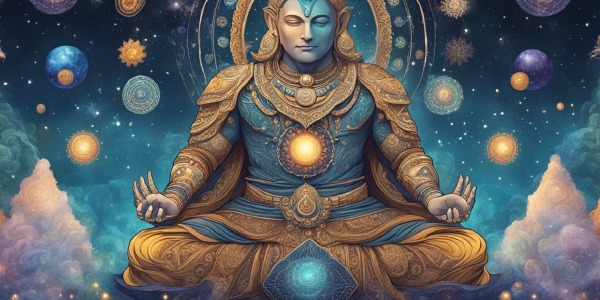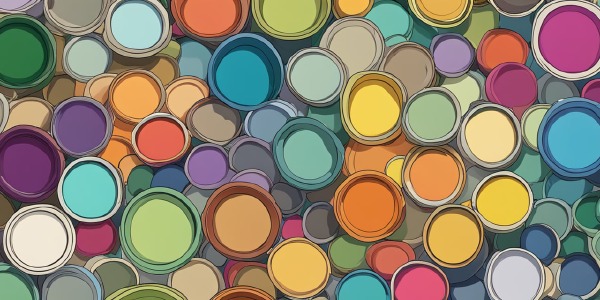The Best Mandala Drawing Software: Top Picks for Artists
Mandala drawing has become a meditative and artistic practice for many, merging creativity and mindfulness. With the advent of digital tools, this art form has transcended paper to the screens of tablets and computers. The market offers a plethora of mandala drawing software, each promising unique features and capabilities, from intricate geometric patterns to freeform designs. These programs appeal to artists ranging from novices taking their first step into digital mandala creation to professionals seeking advanced tools for their intricate designs.
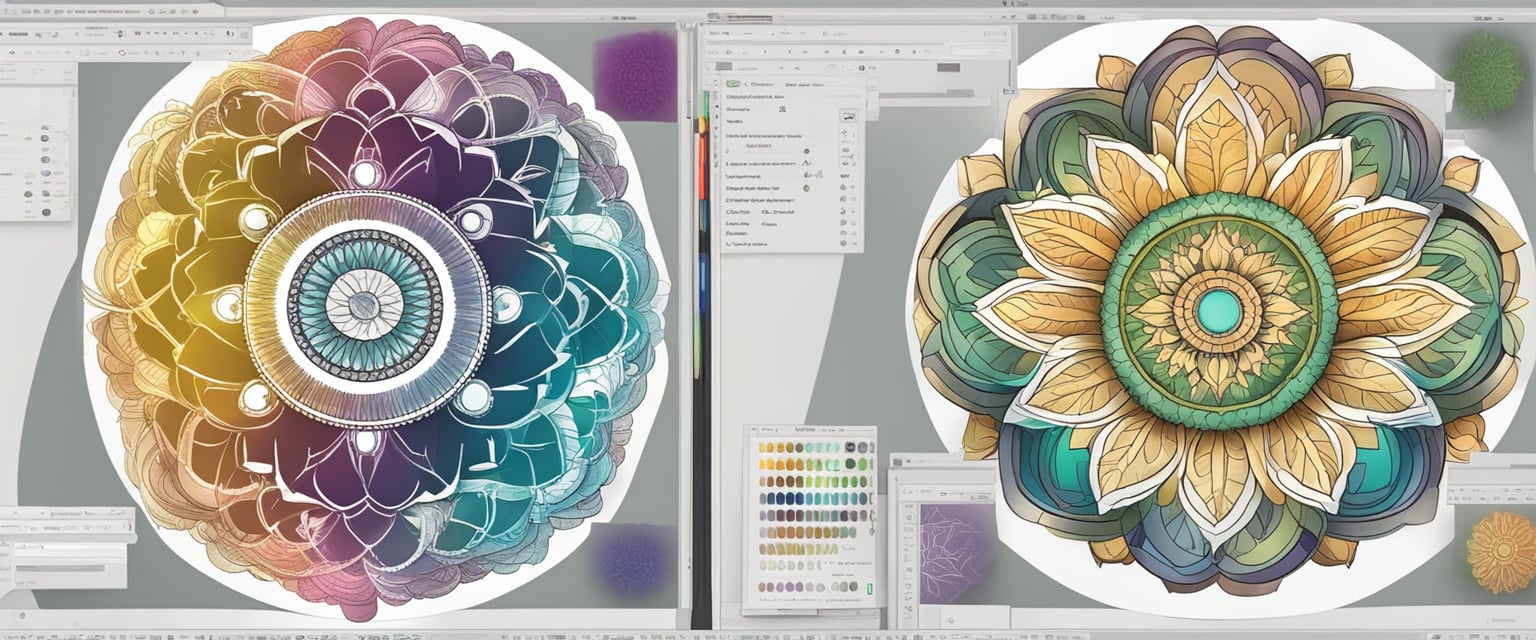
Choosing the right software hinges on several factors, such as ease of use, feature set, software compatibility, and system requirements. Some programs cater to users seeking a relaxing experience with simple symmetry tools, while others are suited for artists demanding precision and advanced editing features. A comparison of popular mandala drawing programs reveals a diverse landscape of options, where the ease of sharing and exporting creations can be as crucial as the drawing experience itself. As this niche evolves, emerging trends in mandala software aim to offer even more immersive and innovative ways to create and share mandala art, shaping the future of this digital canvas.
Key Takeaways
- Mandala drawing software caters to a range of users with varying features and usability.
- The right choice of program depends on compatibility with the artist's hardware and the desired creative features.
- Trends suggest a future of mandala software focused on immersive creation and enhanced sharing capabilities.
Overview of Mandala Drawing
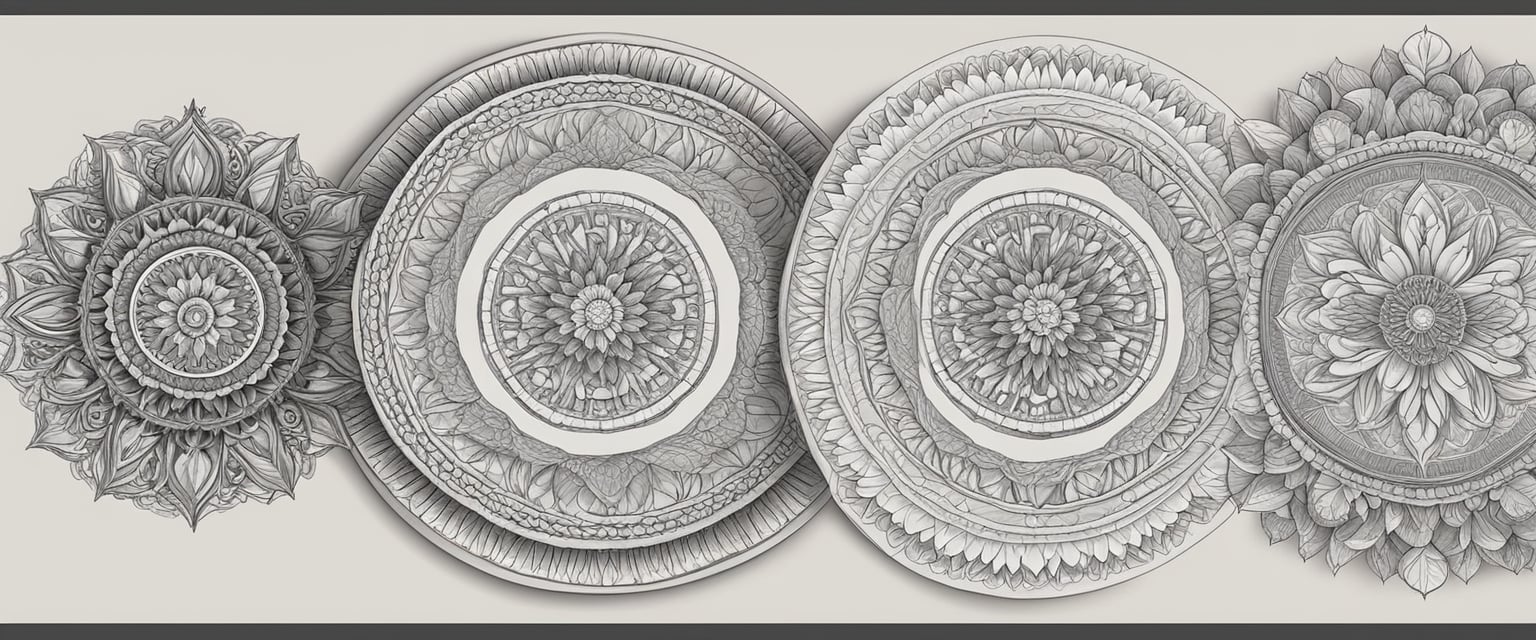
Mandalas are intricate designs that are symmetrical and often circular, reflecting a balance of visual elements. The origins of mandala patterns are deeply rooted in Buddhism and Hinduism, where they represent the cosmology of the universe. The term 'mandala' is a Sanskrit word meaning 'circle'," and these designs are viewed as sacred symbols that can aid in meditation and offer healing benefits.
In the practice of mandala drawing, individuals aim to create symmetrical patterns that radiate from the center. The intricate nature of these designs requires a blend of geometry and artistic expression. Mandalas often feature repetitive shapes and structures, which can evoke a sense of relaxation and focus for the artist. Due to their complexity, these patterns can simultaneously present a challenge and provide a therapeutic experience.
With the rise of digital art, mandala drawing software has become a popular method for creating these designs. These programs offer tools that support the creation of flawless geometrical shapes and symmetrical patterns, simplifying the process and making the art form more accessible. Users can choose from a variety of digital tools, such as templates, symmetry options, and coloring features, to enhance the precision and beauty of their mandalas.
By leveraging software for crafting mandalas, artists can experiment with limitless color combinations and patterns. The digital platform allows for easy undoing of mistakes, a range of symmetry settings, and the ability to share creations with a global community, expanding the traditional limits of mandala art.
Features of Mandala Drawing Software
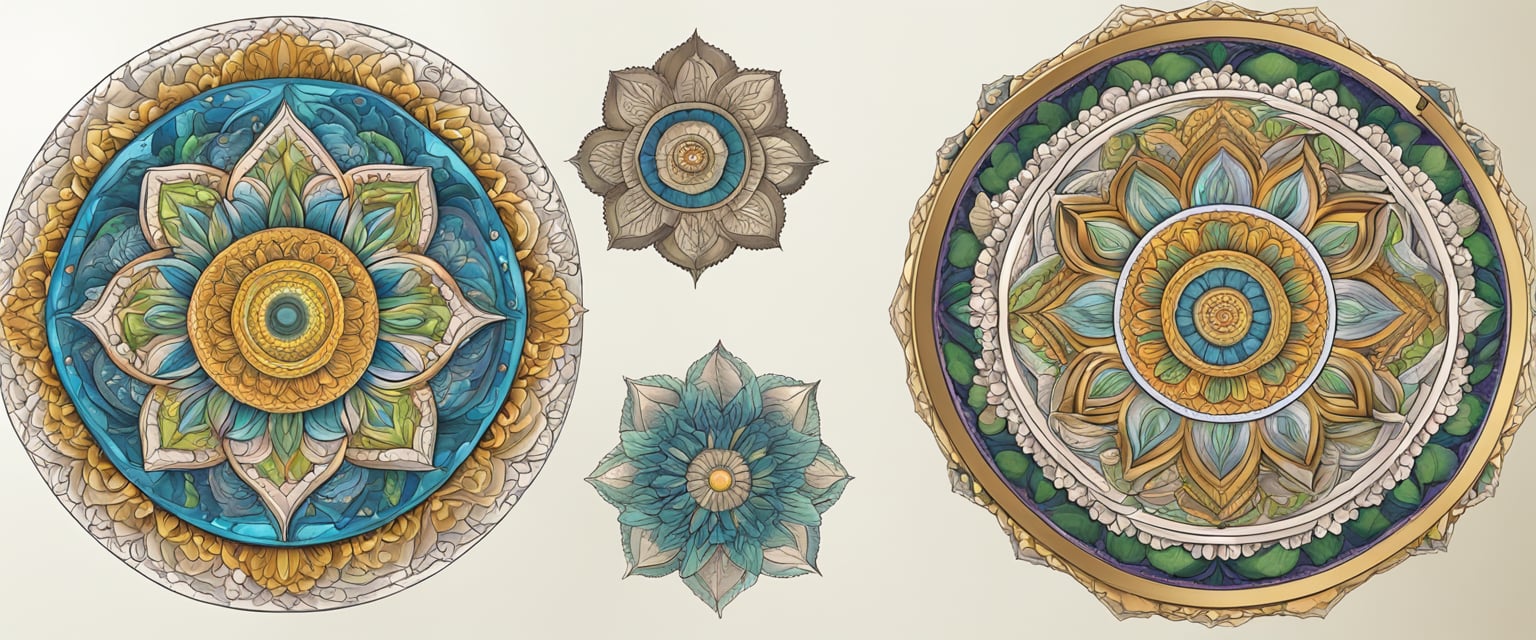
When selecting mandala drawing software, the array of features can significantly impact the creative process. Users typically prioritize a seamless user interface and extensive tool customization to enhance their artwork.
User Interface and Usability
The user interface in mandala drawing software is designed for accessibility, ensuring that both novices and experienced artists can navigate the functionalities with ease. A clear and intuitive layout allows for quick selection of tools, while features like undo and redo buttons provide a safety net for experimentation. The inclusion of a grid can aid in precision, while layers support complex designs without compromising earlier work.
Drawing Tools and Customization
A robust suite of drawing tools is at the heart of any mandala drawing software. Users can expect a variety of pens, pencils, and fineliners with adjustable width, opacity, and stroke softness to create dynamic effects. Colors can be richly customized, with the capacity for nuanced transparency effects.
For symmetrical designs, the software typically includes a radial compass and protractor, central for mandala creation. With tools that enable symmetrical designs through rotations and reflections, precision is highly manageable. Moreover, features like dashed lines and an assortment of shapes and strokes allow for endless variations in design, catering to a wide array of artistic visions.
Software Compatibility and Requirements
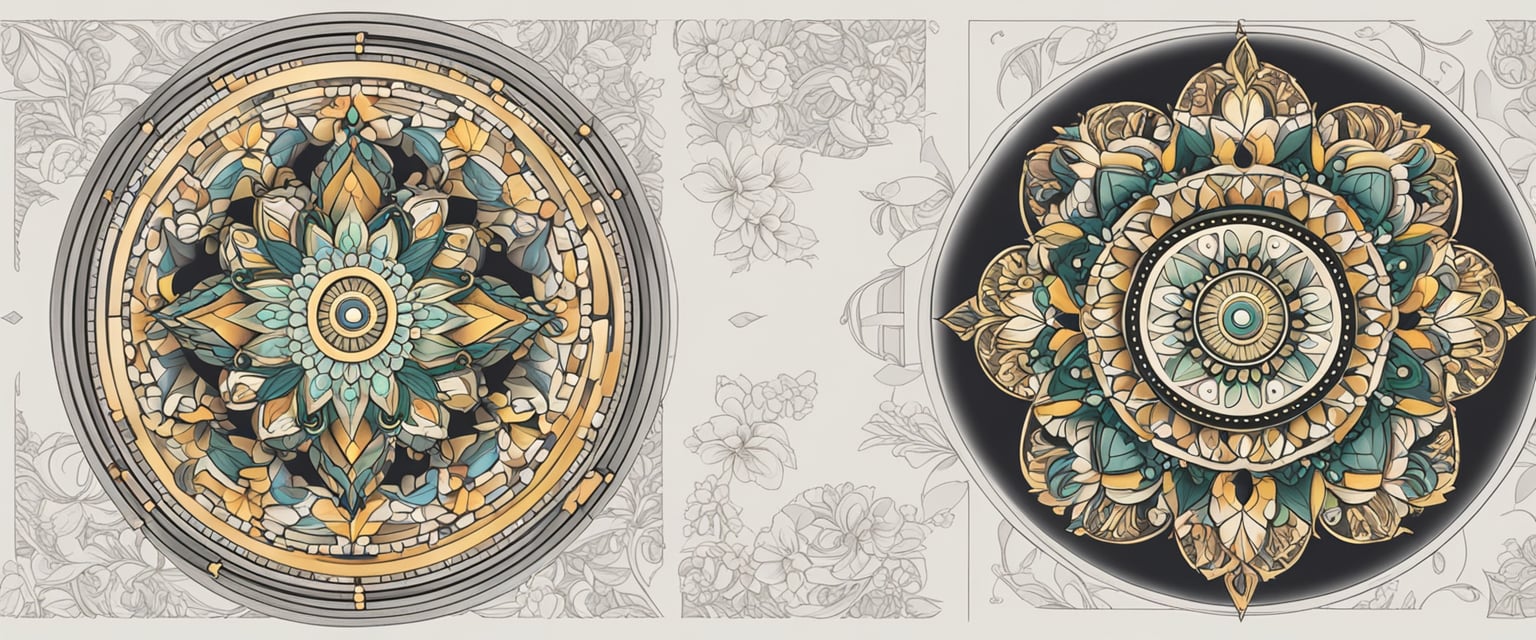
When selecting mandala drawing software, potential users must consider the compatibility with various operating systems and the requirements of their devices. It is essential to ensure that the software will function smoothly on the intended platform, whether that’s a mobile device or desktop computer, and to note any specific features or hardware prerequisites.
Mobile Platforms
iOS and iPadOS: Many mandala drawing applications are available for Apple's mobile platforms, such as the versatile Amaziograph app, which runs on both iOS and iPadOS. Users should verify that their iPhone or iPad supports the latest version of the app to make use of features like 3D Touch for pressure-sensitive drawing.
Android: The Android platform also supports many mandala drawing tools, including the same Amaziograph, offering symmetrical drawing features tailored for touch interfaces.
Desktop Platforms
Windows: For Windows users, software such as MandalaMaker™ gives a robust mandala creating experience. This software typically requires a more powerful setup compared to mobile apps, taking full advantage of desktop processing capabilities.
Apple: On the Apple side of desktop computing, macOS users can often use similar or the same software as Windows users. However, the availability and specific requirements may differ, and users should confirm that the chosen software supports the latest macOS version.
Linux: On the Linux desktop platform the choice of specialised software for mandala creation to run locally is unfortunately limited. However you can always use tools that run in the browser like Mandalagaba. If you want to really use something that runs locally you can also alternativley use some great open source apps like Inkscape or Krita. Even though it is not explicitly made for mandala creation they offer endless possiblities if you take the time to learn how to master them.
Pro Tip: If you are using the PRO mode of Mandalagaba you can download your creation in SVG (Vector) format. Use this to further enhance it with tools like Inkscape or Krita.
Comparison of Popular Mandala Drawing Programs
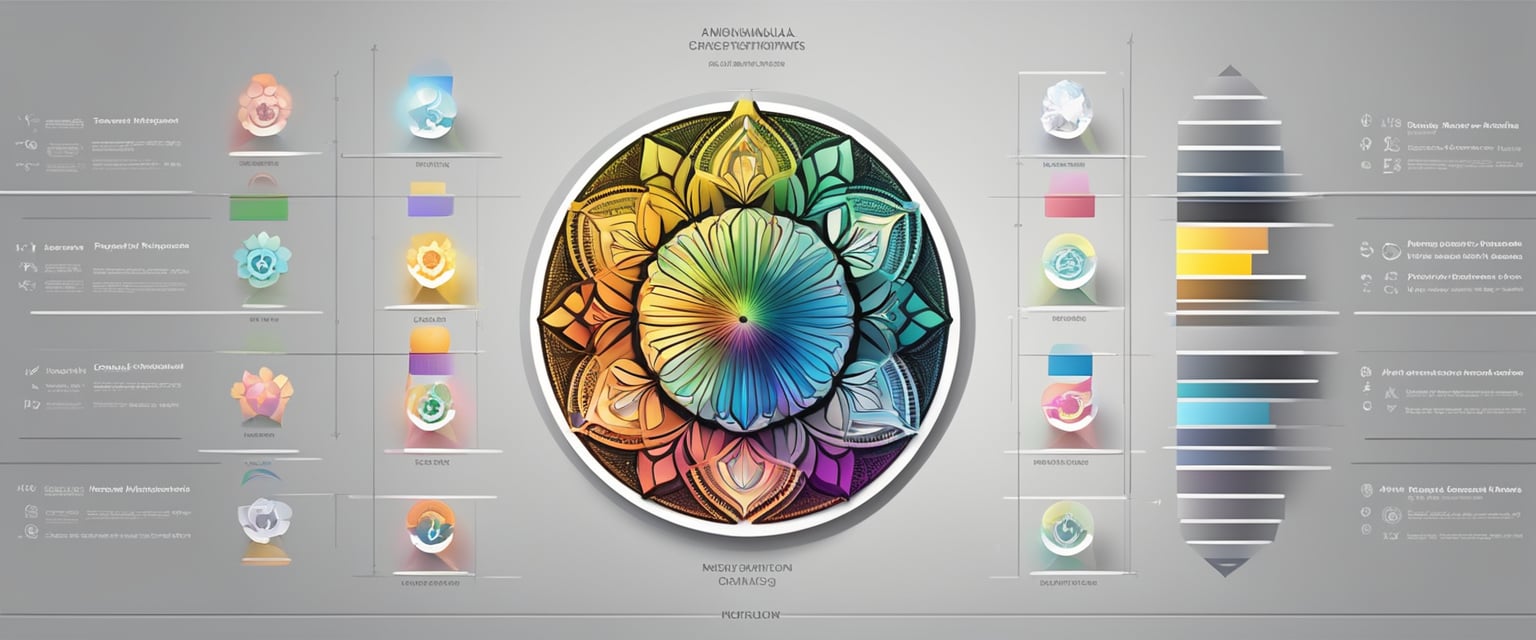
When choosing a mandala drawing program, one must consider factors such as pricing, platform availability, tools for symmetry and rotation, layering capabilities, and whether the app allows for an animated drawing process.
Mandalagaba
Mandalagaba is a free, browser-based tool ideal for creating intricate mandalas. It allows multiple people to work together on the same mandala at the same time, thanks to its real-time collaboration feature. Since there’s no need to download or install anything, and you can access it directly through your web browser, Mandalagaba is a handy choice for both casual artists and those who enjoy group drawing activities.
Amaziograph
Amaziograph caters to users looking for an app that supports various symmetries and the animated drawing process. It's a paid app available primarily on the iPad, allowing artists to harness different types of symmetries like the 2-mirror kaleidoscope and hexagons. The app's interface is straightforward, focusing on ease of use while supporting complex mandala patterns.
iOrnament
iOrnament combines the joy of mandala creation with the science of patterns. This app is available for download on both iOS and iPad OS, and while it is paid, it offers a wide range of symmetrical tools. Users can explore an extensive palette of shapes and lines, with the ability to create both still and animated drawing processes that visually represent the path of creation.
Mandalas Drawing Studio
The Mandalas Drawing Studio app offers a suite of features tailored for artists focusing on custom mandala creations. The app includes a variety of tools that cater to the creation of intricate designs. While the information regarding its pricing and platform availability are specific details not captured here, it is imperative for potential users to investigate these factors to ensure compatibility with their devices and expectations.
Procreate
Procreate is renowned among digital artists for its extensive customization capabilities, including the use of multiple layers in artworks. Though not exclusively a mandala drawing app, its versatility allows it to be an excellent choice for mandala creation, especially with the aid of additional brushes. As a paid app available on the iPad, Procreate stands out for its advanced features, which cater to both beginner and professional artists who are serious about exploring digital art creation.
Best Practices for Mandala Creation
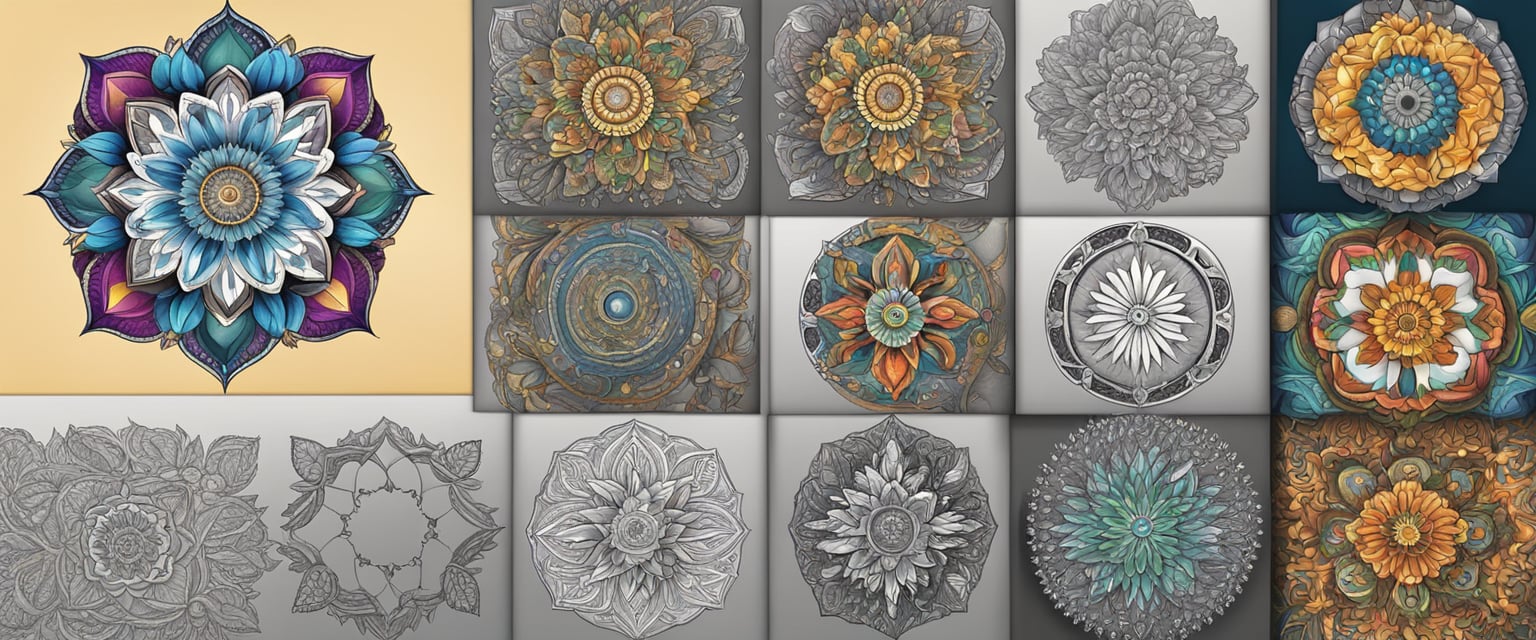
Creating mandalas can be a meditative and artistic process that combines geometric shapes and colors to produce symmetrical designs. Mastery over shapes and tools is essential for creating intricate mandalas that are both aesthetically pleasing and precise.
Starting with Basic Shapes
Artists should initiate their mandala drawings by mapping out basic geometric shapes. This foundational step involves sketching simple forms such as circles, squares, triangles, and hexagons on the canvas to guide the design process. Using a geometry compass to draw perfect circles is crucial as the circle typically forms the central motif in a mandala. Artists might also rely on a 30 cm clear ruler for accurate linear measurements, ensuring that each shape maintains proportionality and balance within the design.
Using the Right Tools for Symmetry
Symmetry forms the heart of any mandala drawing; thus, choosing the right tools to achieve this is paramount. A protractor is indispensable for dividing the canvas into equal sections, aiding in the precise placement of repeated patterns and shapes. Additionally, software like MandalaGaba provides a digital suite that facilitates an unrestricted combination of radial symmetry, tessellations, and recursion. For artists preferring tactile tools, a geometry compass alongside a protractor helps maintain the symmetry integral to mandala designs. Staying symmetrical is easier when tools are properly used, which allows creators to focus on the creative combination of shapes and colors with confidence and ease.
Case Studies and Artist Experiences
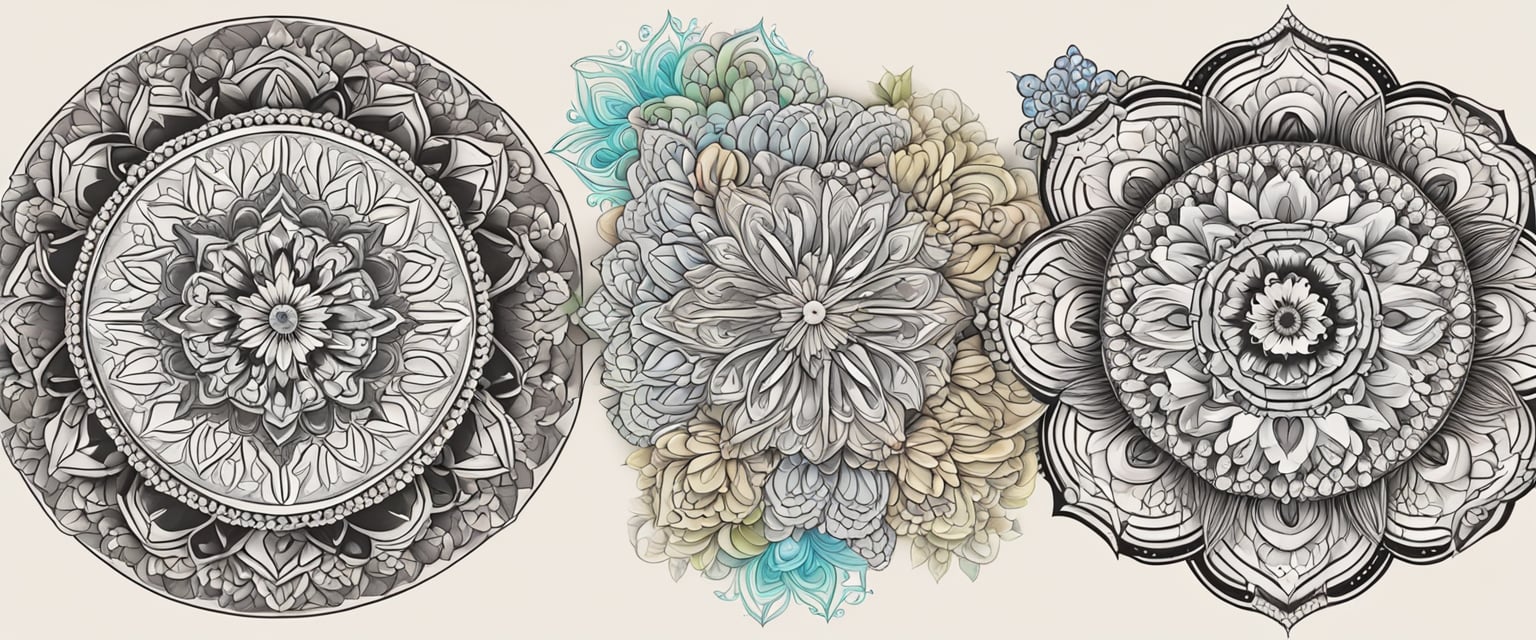
The evaluation of mandala drawing software often hinges on real-world usage and testimonials from those who frequently utilize these tools. Artists and hobbyists alike offer invaluable insights that reveal the strengths and weaknesses of various programs.
Professionals
Professionals in the art industry choose software based on its ability to produce intricate designs that can be included in their portfolios. For instance, a professional artist may opt for software with high precision and advanced feature sets to create mandalas that can be featured both in galleries and on platforms like Instagram. These professionals often rely on intricate layering capabilities and color blending tools to produce work that stands out. They may also require robust exporting options to easily share their designs via email or on their professional websites.
List of Preferred Features by Professionals:
- High precision drawing tools
- Advanced layering capabilities
- Wide range of color palettes and blending options
- Multiple export formats for easy sharing
Hobbyists
For hobbyists, the software of choice is one that’s user-friendly and facilitates a relaxing drawing experience. Hobbyists look for software that allows them to share their creations within a community, such as through social media posts. They often appreciate features like customizable templates and user-friendly interfaces that don’t require a steep learning curve. Sharing their creations and progress on platforms such as Instagram helps in receiving feedback and connecting with a wider community of mandala enthusiasts.
Key Considerations for Hobbyists:
- Intuitive user interface
- Customizable templates
- Social media integration for easy sharing
- Community features for feedback and connections
Sharing and Exporting Options
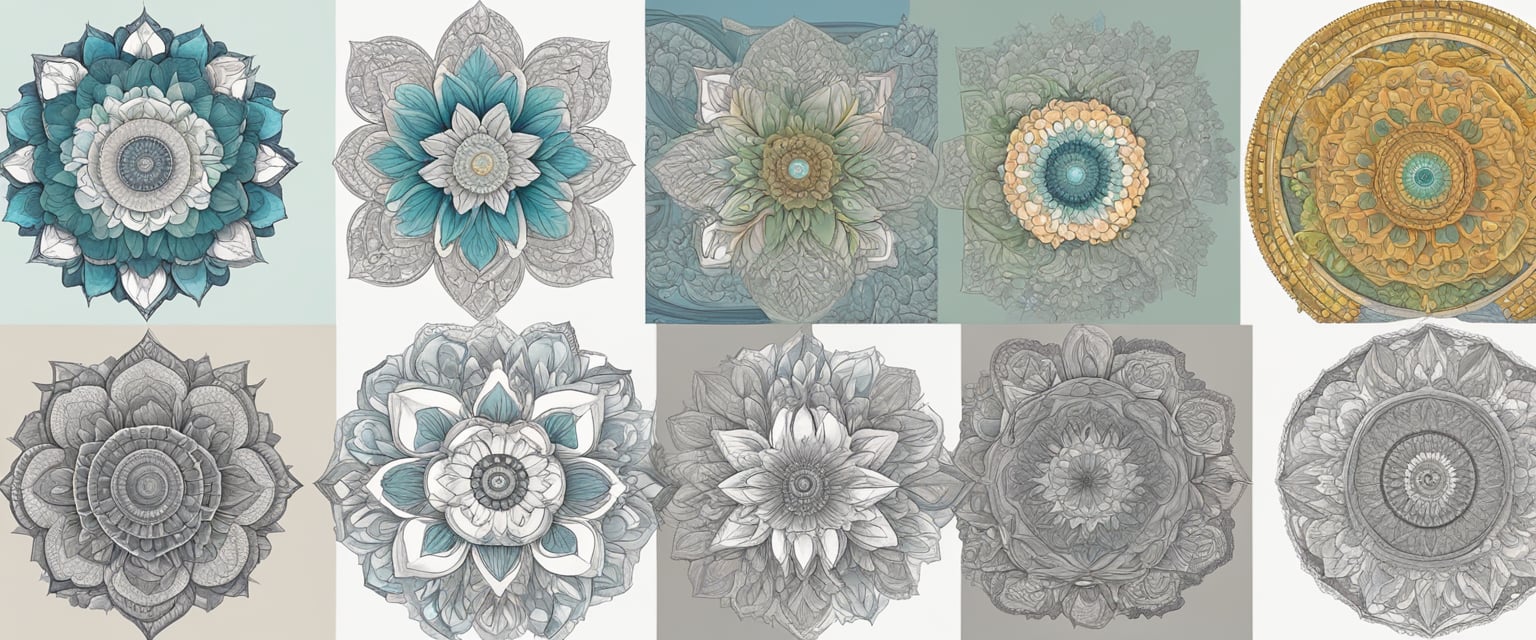
When considering mandala drawing software, the ability to share creations and export them in various formats is crucial. Users demand high-quality outputs and the flexibility to share artwork while maintaining control over their privacy.
File Formats and Quality
Mandalagabe offers users the option to export their designs as high-quality PNG images, ensuring a broad compatibility with other image viewers and editors. If you want to export your work as a SVG (Vector) file you can always switch to the PRO Mode in Mandalagabe.
Users seeking more scalable and editable formats can also turn to MandalaMaker™, which natively supports SVG file exports. This vector graphics format is key for those who want to further edit their designs in professional graphic design software without loss of quality.
Social Media and Privacy
For artists eager to showcase their mandala creations on platforms like Instagram, selecting software with built-in social media sharing features is useful. However, they must be cognizant of the respective privacy policies, as sharing data is a matter of personal privacy. Software that allows direct sharing should clearly inform users about what data is being shared and offer the ability to share privately or with selected audiences. Also, options to share via email provide an alternative for users wishing to keep their art within closed circles.
Future Trends in Mandala Software
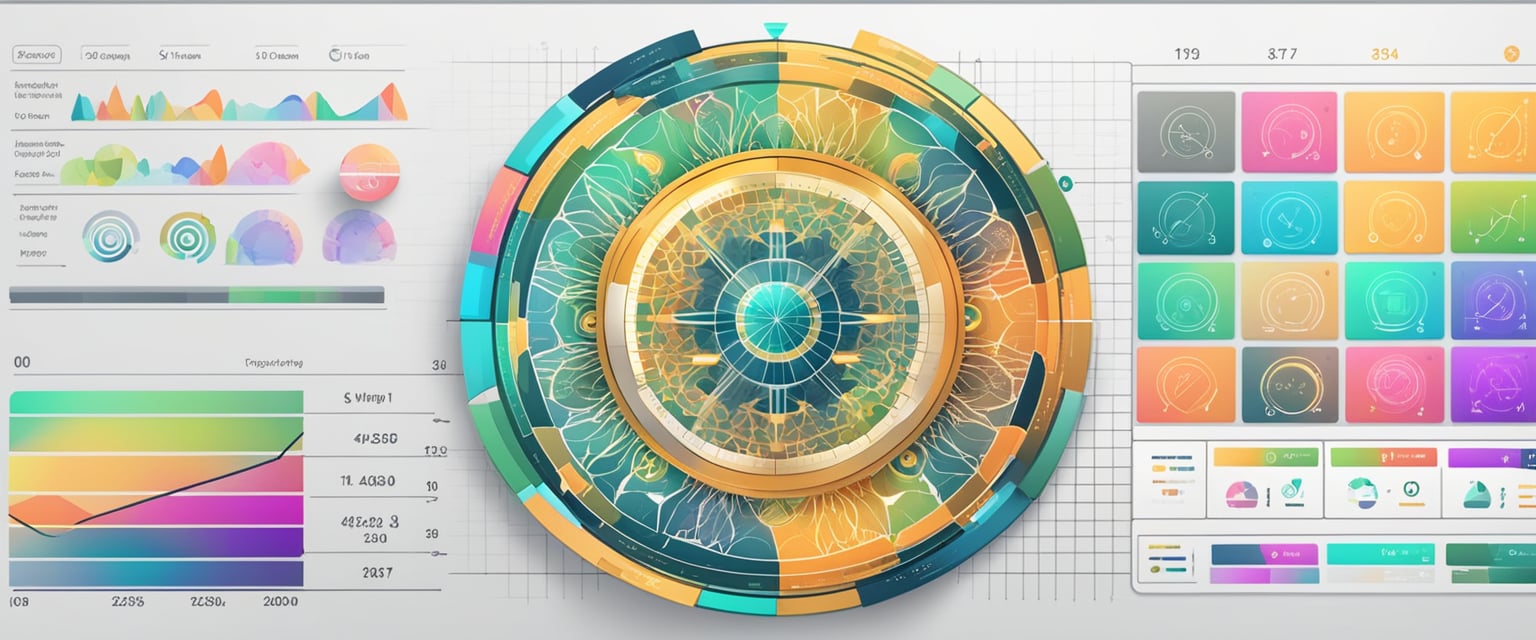
As digital art continues to flourish, mandala drawing software is evolving with a range of features that cater to both novices and professional artists. Here's what to expect in future mandala design apps:
3D Touch Integration: Artists can look forward to a more tactile experience through 3D Touch capabilities, allowing for nuanced control over the drawing process. This technology would enable users to create mandalas with a sense of depth, making the design process more interactive and immersive.
Animated Drawing Process: One anticipated feature is the animation of the mandala creation process. Users would be able to visualize and edit each stage of their design, adding a dynamic layer to the creation process.
Advanced Shape Diversity: While traditional mandalas focus on circles, future software is expected to offer an array of shapes, such as stars and squares, to challenge and inspire creativity.
Enhanced Suggestion Algorithms: With machine learning advancements, apps will likely provide intelligent suggestions that help users refine their art. These suggestions could range from color palettes to symmetry options, tailored to the artist's unique style.
Collaborative Features: Enhancements in cloud functionality may encourage the collaboration of mandala art, enabling multiple users to contribute to a single piece, thus merging styles and techniques across different geographies.
It stands to reason that these trends will not only expand the capabilities of mandala drawing software but also provide artists with innovative tools to express their creativity in unprecedented ways. The key for developers will be in maintaining a balance between advanced features and user accessibility, ensuring that the spiritual essence of mandala art remains intact.
Frequently Asked Questions
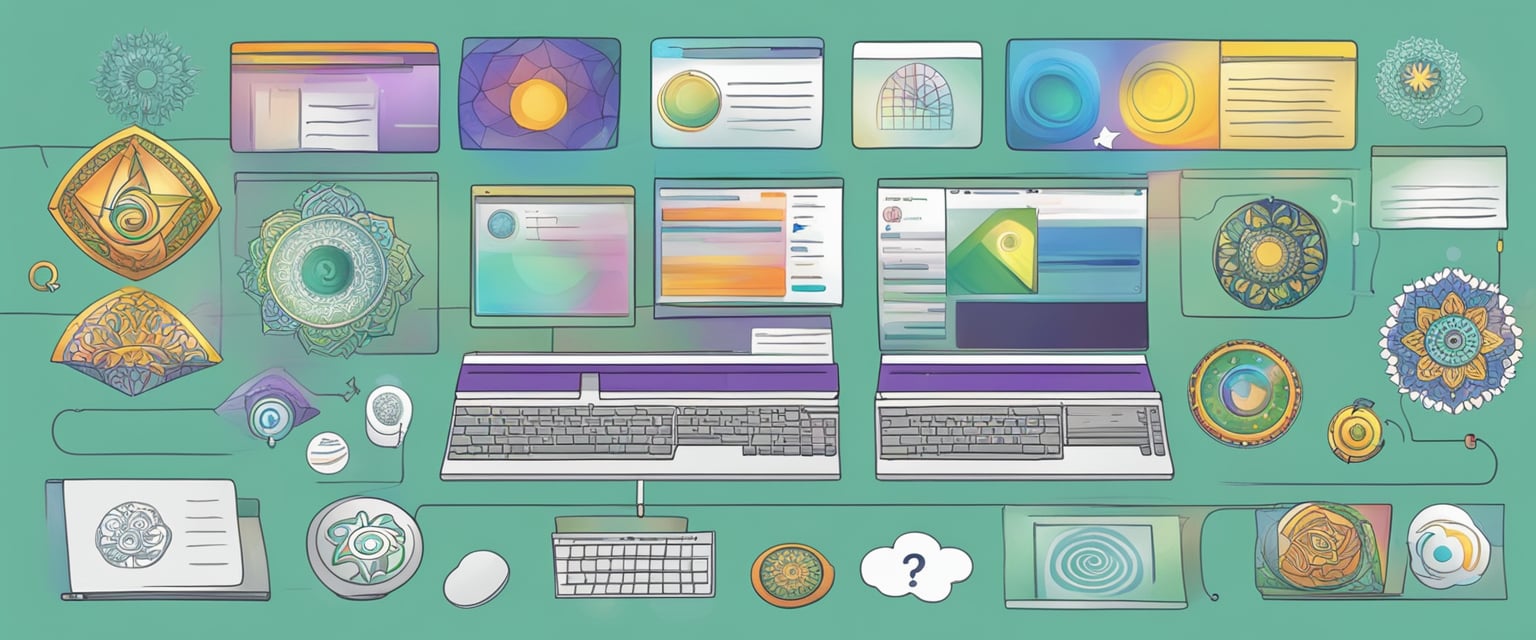
When exploring the realm of mandala creation software, various questions arise regarding functionality, accessibility, and quality. This section serves to pinpoint succinct answers to common inquiries.
What are the top-rated mandala drawing applications for Desktop users?
The top-rated mandala drawing applications for desktop users include Krita, Adobe Illustrator, Corel Draw, Inkscape, and Autodesk Sketchbook PRO. These software options provide powerful tools for creating intricate mandala designs on Mac and Windows computers.
Which mandala coloring apps for iPad are easy to use?
iPad users can access free apps such as MandalaGaba and Amaziograph, which provide intuitive interfaces for mandala coloring and design, ideal for hobbyists and those looking to relax with creative expression.
How does iOrnament compare to other mandala drawing software?
iOrnament is acclaimed for its user-friendly approach in crafting mandalas, employing a symmetry function that enhances the drawing experience, making it stand out among other mandala drawing software for its simplicity and educational value.
What tools do artists recommend for creating mandala art digitally?
Artists often recommend tools like a sharp-pointed compass for precision in mandala art, as well as digital styluses and tablets that can simulate traditional drawing techniques.
Are there any professional-grade, free mandala creation programs?
While professional-grade software often comes at a cost, there are free alternatives like MandalaGaba that appeal to both novices and seasoned artists for crafting digital mandalas without financial investment.
What features should one look for in an app specifically designed for mandala art?
A mandala art application should have the ability to undo and redo actions without any limit. To make it user-friendly, it should allow users to save their work in common, easy-to-use file formats. Having a vector format option, such as SVG, would be very beneficial. This will guarantee that your artwork retains its high quality, no matter how much you enlarge or shrink it.


